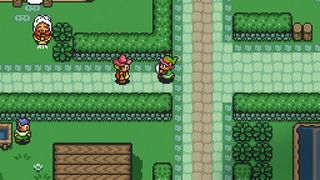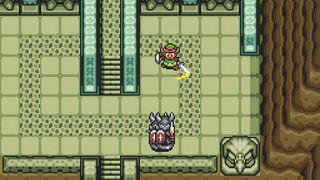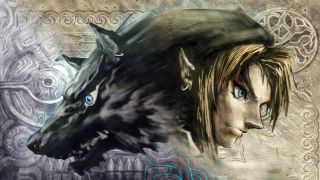How A Link to the Past paved the way for the future of Zelda
It’s a testament to The Legend Of Zelda: A Link to the Past’s quality that even today, more than two decades after its original release, many Nintendo fans (including me) still herald it as one of the best adventures – if not the best overall – in Zelda’s history.

Nintendo had blown away 8-bit-era gamers with the original Legend of Zelda, a massive top-down adventure that saw the young hero Link exploring an open world setting and fighting his way through dungeons to save Princess Zelda from the evil Ganon. It was a stunning game – not just because of its general high quality, but also because it was released at a time when most games still followed the arcade method of providing a number of linear stages. Going from Pac-Man’s labyrinths or Donkey Kong’s stack of girders to an entire explorable landmass was revolutionary at the time.
After following up with Zelda 2: The Adventure of Link (which was also well-loved, but divided gamers with its side-scrolling action and RPG-style levelling up elements), all eyes were focused on Nintendo to see how it would evolve the Zelda series with its next console, the significantly more powerful SNES. Before long, gamers would have their answer.

Released in Japan as The Legend Of Zelda 3: The Triforce of the Gods (the name was changed to A Link to the Past in the west because Nintendo of America had a policy on not having religious references in its games), Link’s third adventure raised the bar so high that the residents of Skyloft found themselves tripping over it on a regular basis. Making use of the SNES’s powerful 16-bit processor, A Link To The Past was the first SNES game to be stored on an 8Mbit (rather than a 4Mbit) cartridge, giving Nintendo the space it required for a truly massive adventure.
And what an adventure it was. A prequel to the first two Zelda games (hence its English title), A Link to the Past opens with a young boy called Link sleepwalking as Princess Zelda calls to him telepathically. She explains that she’s being held prisoner in the basement of Hyrule Castle and needs Link to rescue her. Sneaking out in the pouring rain – we still reckon this is one of the most atmospheric moments in any Nintendo game – Link hotfoots it over to the castle, makes his way inside and meets his uncle, who gives Link a sword and shield and tells him to save the day. What ensues is a quest spanning tens of hours as Link tries to save Hyrule and rescue Zelda from the evil wizard Agahnim and, ultimately, Ganon.
"Truly, A Link to the Past wrote the winning recipe for the adventures to come."
Although it was preceded by two games, it was A Link to the Past that introduced many gameplay mechanics, items, locations and concepts that have since become Zelda staples. The Master Sword, often the weapon that first springs to mind when Nintendo fans think of Link, did its whole ‘evil’s bane’ routine for the first time. Link’s trusty hookshot, the device responsible for countless head-scratching dungeon puzzles over the years, also appeared here first, as did the speed-enhancing Pegasus Boots and the Ocarina (although the latter didn’t truly come into its own until the aptly named Ocarina of Time arrived on the Nintendo 64).
Link’s room-clearing spin attack was born on SNES, as was the way he swings his sword in an arc, rather than simply stabbing it (meaning he can attack opponents slightly off to the side of him, instead of always having to face them head-on, as in the first Zelda game). Then there are the ever-elusive pieces of heart – tucked away in hard-to-find locations and useless until you find four of the blighters to make a full heart container – which also made their first appearance. Truly, ALTTP wrote the winning recipe for the adventures to come.
Sign up to the GamesRadar+ Newsletter
Weekly digests, tales from the communities you love, and more

While A Link To The Past is packed with memorable moments from start to finish, the ones that startled me (and many other gamers) mostly took place in what Nintendo lead us to believe was the final stretch of the game. Link’s mission appears straightforward at first: in order to defeat the evil Agahnim he has to claim the Master Sword, but to prove that he’s worthy to yank the illustrious weapon from its resting place he first has to find and retrieve the three magic pendants scattered throughout Hyrule. Since these mystic gewgaws are dotted far and wide and collecting them earns Link the Master Sword, I reasoned that the final step was to break into Hyrule Castle and give Agahnim a righteous kicking. I was gloriously wrong.
Instead, just before Agahnim is defeated he sends Zelda and Link to the mysterious Dark World, a parallel version of Hyrule in which everything is reversed; the bright, cheery environments are replaced with gloomy, miserable surroundings and what were once scorching, dry deserts are now freezing, boggy marshes. What gives? It emerges that Zelda is trapped in Ganon’s Tower in the Dark World, and in order to get in there Link must rescue the seven descendants of the mythical Seven Sages and harness their combined power. In other words, rather than the game approaching its end it turns out it had only really just begun, with another seven dungeons to find and a brand new world to explore.

This was a twist of M. Night Shyamalan proportions (or did Sixth Sense have a twist of Zelda proportions?) and it blew me away. In an age when games are uploaded to YouTube in their entirety on the day of release, it’s impossible to imagine a developer ever pulling off such a grandstanding trick again. It says a lot about the depth of Nintendo’s talent that, even when it pulled the exact same trick – with the ability to travel through time in Ocarina of Time and see a grim, essentially Dark World-ised future version of Hyrule in that game, too – I was blown away afresh.
It speaks volumes for the strength of A Link to the Past's version of Hyrule that it became the centre of another adventure in 2013 with A Link Between Worlds on 3DS. Set six generations later, it recaptures that Zelda magic that it's predecessor paved the way for. So enduring is the game's appeal that I wouldn't be surprised if we revisited it again another two decades from now...

Zelda and Star Fox legend Takaya Imamura would "love" to make a Star Wars game with The Witcher 3's CD Projekt Red – and now I'm desperate to make it happen

Legendary Zelda dev "wasn't too pleased" about working on A Link to the Past as it robbed his enjoyment of playing the finished game: "I still really don't want to play that game"
Most Popular








